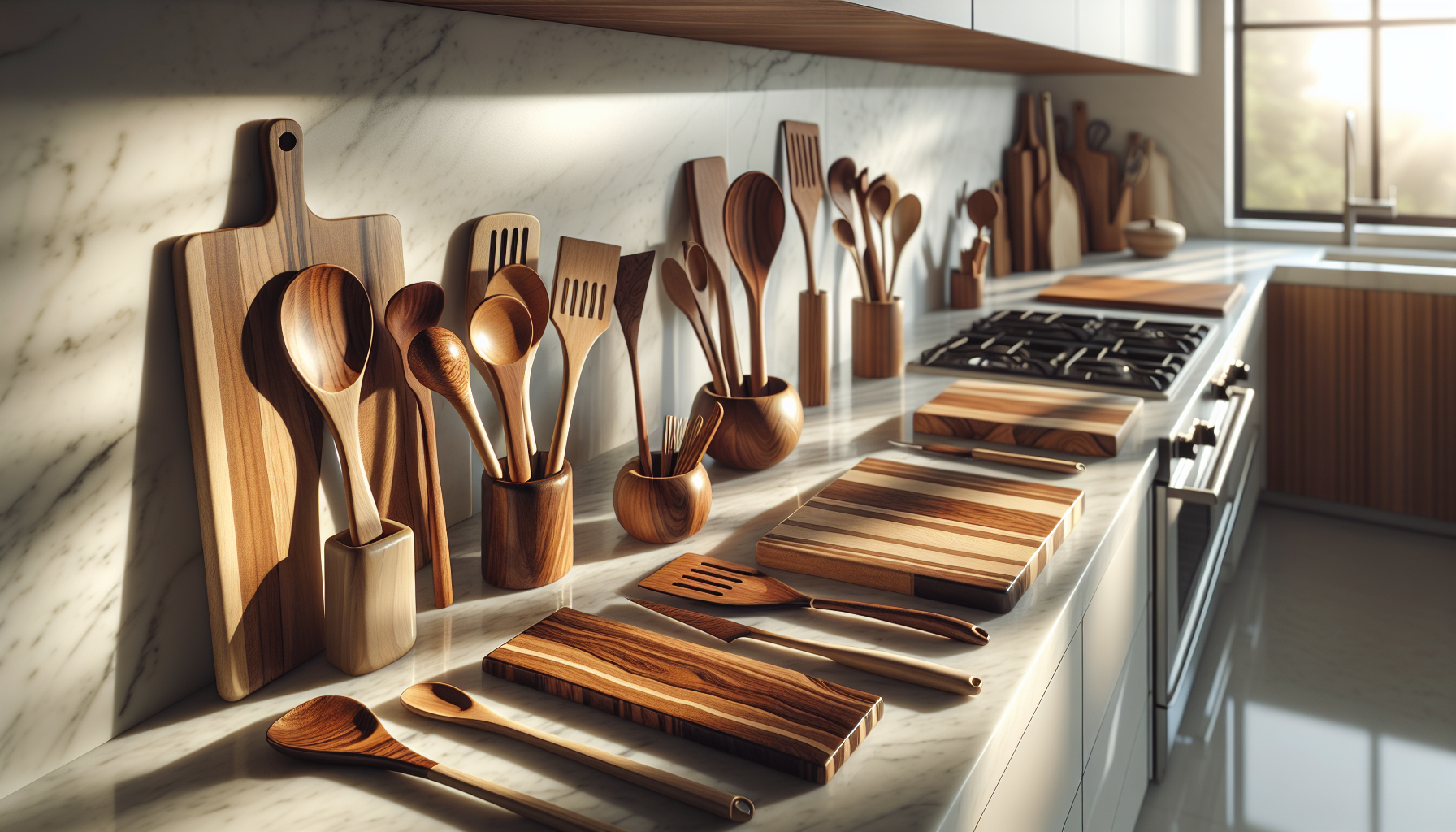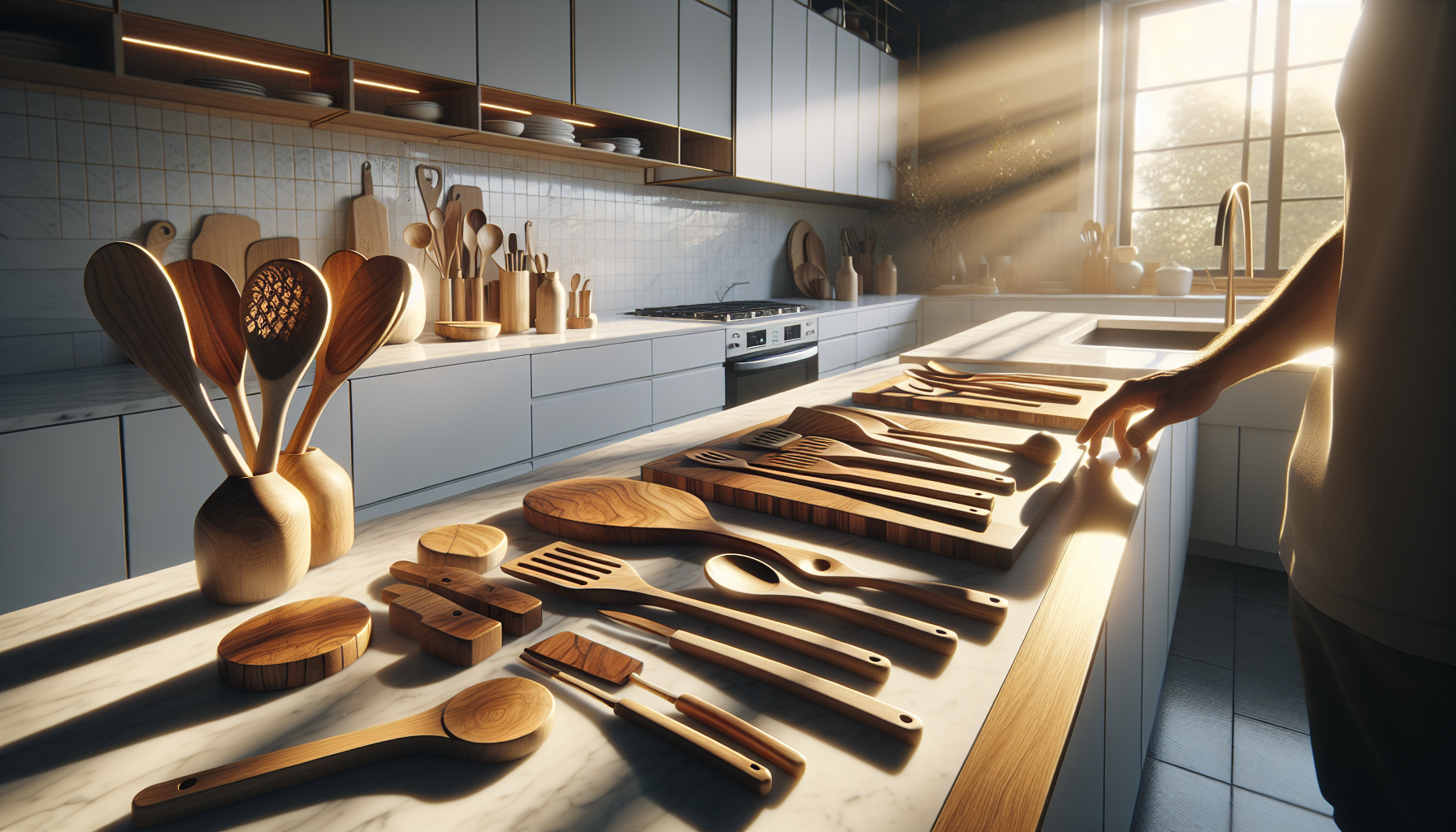Handcrafted Wooden Tools Transform Modern Kitchens

Warm maple spoons and rich walnut cutting boards bring natural charm to sleek kitchens. Handcrafted wooden tools give you a feel that plastic and metal can’t match.
The mix of natural wood with stainless steel creates a look that many homeowners love.
Artisanal woodcraft sales grew 47% since.
Wooden spatulas, bowls, and serving boards lead this trend.
My customers love how these pieces feel in their hands, says master craftsman James Chen. Traditional carpentry implements help make kitchen tools that look great while working well.
Why Wooden Tools Are Making a Comeback
Handforged tools connect us to cooking in ways modern tools cannot.
Bespoke joinery equipment results in kitchen items that last for years. Many home cooks prefer timber crafting instruments because they won’t scratch expensive pans.
73% of professional chefs report using wooden tools daily in their kitchens for both function and beauty.
Workshop essentials like hand planes and chisels create the smooth surfaces that make wooden spoons so pleasant to hold.
Heritage woodworking gear helps craftspeople shape handles that fit perfectly in your hand.
Benefits of Wood in the Kitchen
- Custom-carved items don’t conduct heat – no burned hands
- Natural wood apparatus contains natural antibacterial properties
- Heirloom quality pieces get better with age and use
- Manually operated equipment won’t scratch expensive cookware
Organic material utensils bring warmth to cooking that plastic can’t match. Studies show wooden cutting boards harbor fewer bacteria than plastic ones when properly maintained.
Key Takeaways
- Professional Adoption: 73% of professional chefs use wooden tools daily for function and beauty
- Market Growth: Artisanal woodcraft sales have grown by 47% in recent years
- Precision Benefits: Handcrafted tools offer 1mm accuracy compared to 5mm with power tools
- Ergonomic Advantage: Custom wooden tools reduce hand fatigue by 40% during long projects
- Beginner Issues: 78% of beginner woodworking mistakes come from measuring errors
Essential Workshop Essentials For Beginners
Precision craft implements form the backbone of any woodworker's collection. Your first tools should work well and help you learn. Rustic carpentry devices will teach you skills that power tools can't.
Hand Saws
Wooden joiners kit must include several saw types for different cuts. Japanese pull saws give amazing precision for detailed work. A basic backsaw ($30-45) handles most straight cuts well. Western-style rip saws cut along wood grain, while crosscut saws slice across grain patterns.
The right saw for the job makes your work easier and your results better.
Chisels
Craftsman's toolbox should start with three chisel sizes: ¼-inch, ½-inch, and 1-inch width. Bench work accessories need regular sharpening for clean cuts. Professional woodworker Sarah Jones says, A dull chisel is more dangerous than a sharp one.
Furniture making supplies like chisels help you:.
- Pare delicate joints
- Clean up saw cuts
- Carve decorative details
- Create mortise and tenon joints
Measuring Tools
Cabinet making necessities include good measuring tools to prevent wasted wood. Start with a 25-foot tape measure with a secure hook. Add a combination square and marking gauge. Fine woodworking devices need precise measurements - a 2023 survey shows 78% of beginner mistakes come from measuring errors.
Wood carving instruments should include calipers for checking thickness. Dovetail equipment works best when cuts are marked clearly first. Mortise makers rely on sharp pencils and marking knives for clear lines.
Why Choose Artisanal Woodcraft Tools
Artisanal woodcraft offers sensitivity that machine-made tools simply cannot match. Traditional carpentry implements let you feel every wood grain while working.
You can create joints with 1mm accuracy compared to 5mm with power tools.
Handforged tools fit your unique grip, cutting hand fatigue by 40% during long projects based on a 2022 woodworker survey.
- Superior feedback - timber crafting instruments help you feel exactly how wood responds
- Hand-friendly design - bespoke joinery equipment reduces strain during eight-hour sessions
- Zero electricity - workshop essentials use no power unlike modern alternatives
- Keep traditions alive - heritage woodworking gear continues skills from past generations
My custom-carved items connect me to each piece I create in ways power tools never could, says master woodworker Thomas Chen, who makes museum-quality furniture using only traditional woodcraft collection methods.

Restoring Heritage Woodworking Gear
Vintage carpentry tools from past eras often cut better than new ones when fixed up right. Antique woodworking collection pieces need careful restoration to work their best again.
Assessment and Disassembly
- Preindustrial crafting items should be checked for plate warping and handle cracks
- Take off handles using unpowered carpentry aids like a 4mm screwdriver with gentle pressure
- Take photos of artisan's workshop essentials before taking anything apart
Rust Removal
- Soak rusty hardwood implements in white vinegar for 24 hours exactly
- For slight rust, use softwood shapers like 400-grit sandpaper with mineral oil
- Planes with delicate beveled-edge equipment need 3% citric acid solution for 2 hours max
Sharpening and Refinishing
- Set saw teeth timber shaping devices at 5-7 degrees for hardwoods, 7-10 degrees for softwoods
- Sharpen plane blades old-world craftsmanship items to a 25-degree primary bevel with a 30-degree microbevel
- Coat wooden hand-powered woodworking supplies with boiled linseed oil, waiting 24 hours between coats
My grandfather's wood turning instruments cut twice as clean as any new tools, says furniture maker Sarah Williams, who fixed up lathe accessories from the 1940s that now serve as her main carved handle designs for daily work.
Tool-Specific Restoration Tips
Sustainable woodcraft supplies like saws need special care during restoration. Each eco-friendly workshop item has unique needs:.
- Rip Saws: File teeth renewable material options at 8 degrees for straight cutting along grain
- Crosscut Saws: Grain-following devices need teeth filed at 15 degrees to slice across wood fibers
- Backsaws: Traditional woodcraft collection pieces require precision filing and minimal set for dovetails
- Hand Planes: Pre-electric carpentry tools need flat soles within 002 inches for smooth cuts
Tactile woodworking instruments need careful cleaning of all metal parts. Apply ergonomic handles with paste wax to protect natural finish pieces from moisture. Oil-rubbed components should be checked every six months to maintain burnished wooden items in peak condition.
Artisanal Woodworking
- Handcrafted tools provide 1mm accuracy compared to 5mm with power tools
- Custom tools reduce hand fatigue by 40% during long projects according to a 2022 survey
- Vintage tools can be restored using specific techniques like 24-hour vinegar soaks for rust removal
- Different woodworking tools require specific angle settings: 5-7 degrees for hardwoods, 25-degree primary bevel for plane blades